Art & Exhibitions
The Met’s New Show Brings Together Renaissance Portraits That Aren’t What They Seem
Artists used the back of canvases, hinges, panels and codes to reveal secret messages.
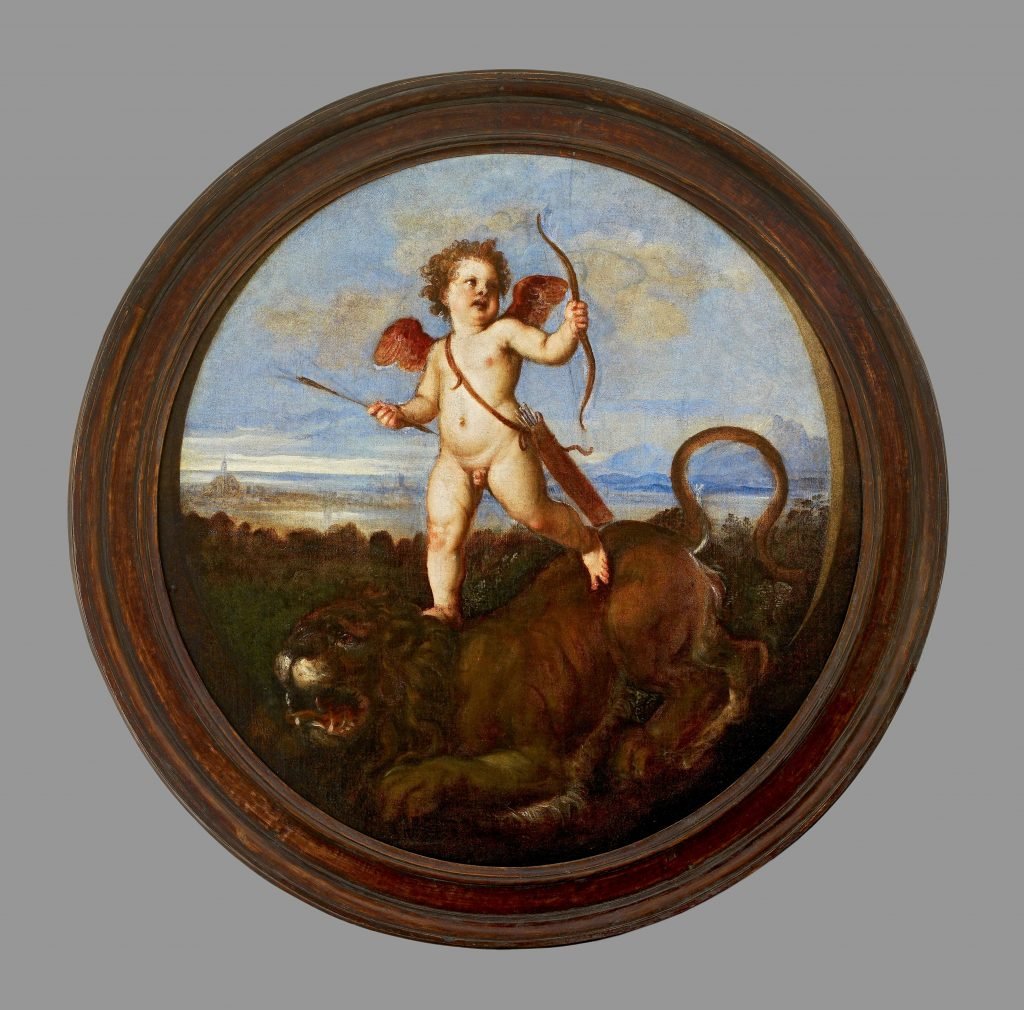
Artists used the back of canvases, hinges, panels and codes to reveal secret messages.

Adnan Qiblawi

“Hidden Faces: Covered Portraits of the Renaissance,” a new exhibition at the Metropolitan Museum of Art, will be the first ever to showcase the history of a peculiar and little-known practice of Renaissance painting: multi-sided portraits which veiled the identity of a portrait’s subject, using three-dimensional elements such as panels, hinges, and secret codes.
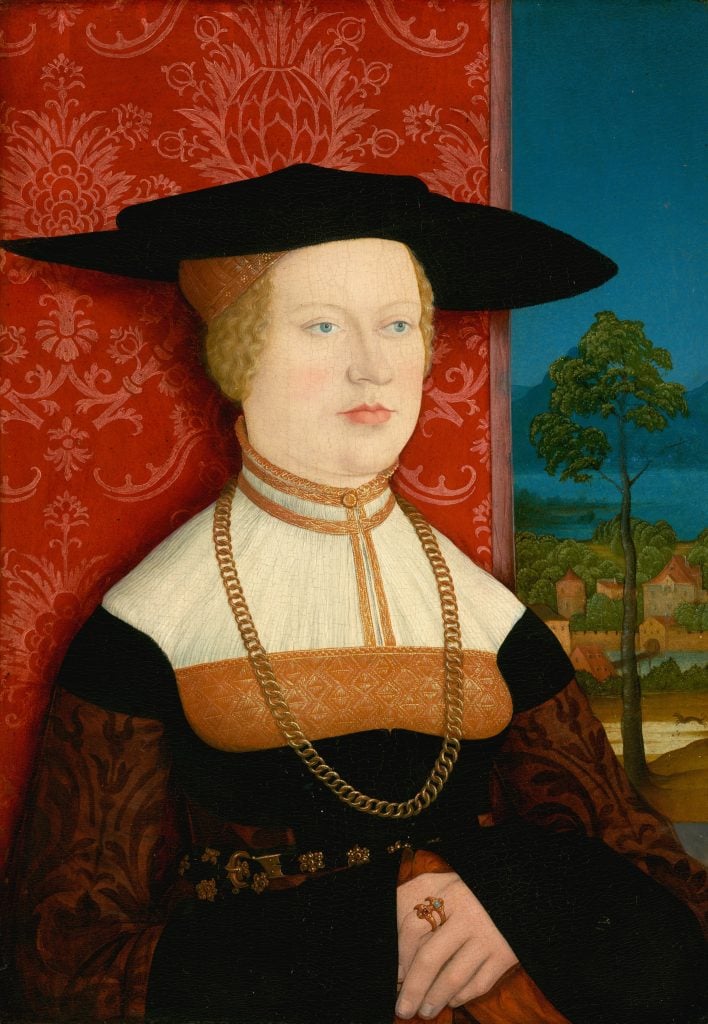
Bernhard Strigel, Portrait of Margarethe Vöhlin (recto); Coat of Arms (verso) (1527). National Gallery of Art, Washington, D.C., Ralph and Mary Booth Collection. Photo: Courtesy National Gallery of Art, Washington.
Multi-sided portraits developed in Italy and parts of Northern Europe throughout the 15th and 16th centuries. The works represent some of the most technically innovative secular works of the Renaissance. This exhibition aims to challenge the traditional understanding and viewership of portraiture from the era by showcasing almost 60 artistic works by the likes of Titian, Lucas Cranach, and Lorenzo Lotto. These include boxes, lockets, and other objects which were originally created as a pair, such as portraits and their covers, which are now being reunited after a prolonged separation across different private or museum collections. Some of these paintings were intended as mobile pieces of propaganda, while others were designed to obscure a lover’s identity.

Lorenzo Lotto, Portrait Cover with an Allegory of Chastity (ca. 1505). National Gallery of Art, Washington, D.C., Samuel H. Kress Collection. Photo: Courtesy National Gallery of Art, Washington.
One example is the early-15th century Portrait of Giovanna de’ Rossi (ca. 1505) by Italian painter Lorenzo Lotto. The portrait of the lady was shielded by a sliding panel, which itself depicted a scene of a dark wood, with drunken, lewd satyrs lurking behind trees, and leering over a gleaming female figure draped in gold and white. She is radiating purity as a cherub sprinkles dust upon her from above. This allegory of chastity gives the viewer a perspective into either the character of the lady in the portrait, revealed once the cover is slid over, or into the relationship between artist and subject.
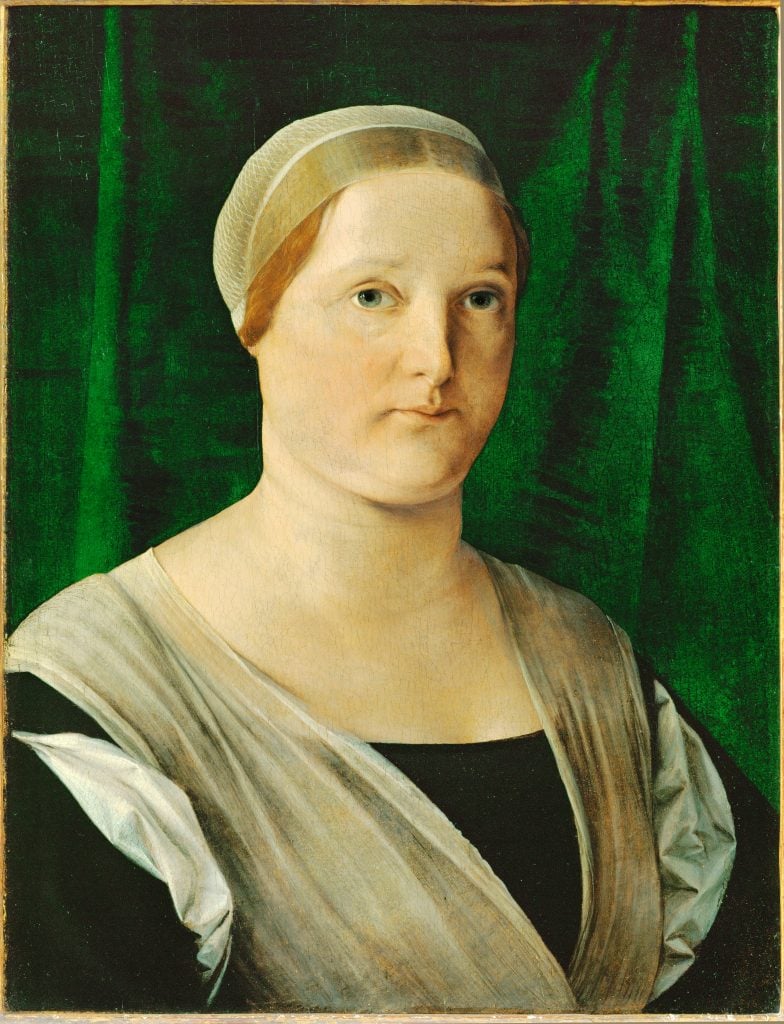
Lorenzo Lotto, Portrait of Giovanna de’ Rossi (ca. 1505). Musee des Beaux Arts, Dijon Photo: Erich Lessing / Art Resource, NY.
Other paintings were double-sided, such as Netherlandish portraitist Hans Memling’s late-15th century Portrait of a Man. The front side, or recto, depicts the portrait itself while the painting’s reverse side, or verso, depicts one of Europe’s earliest independent still lifes.
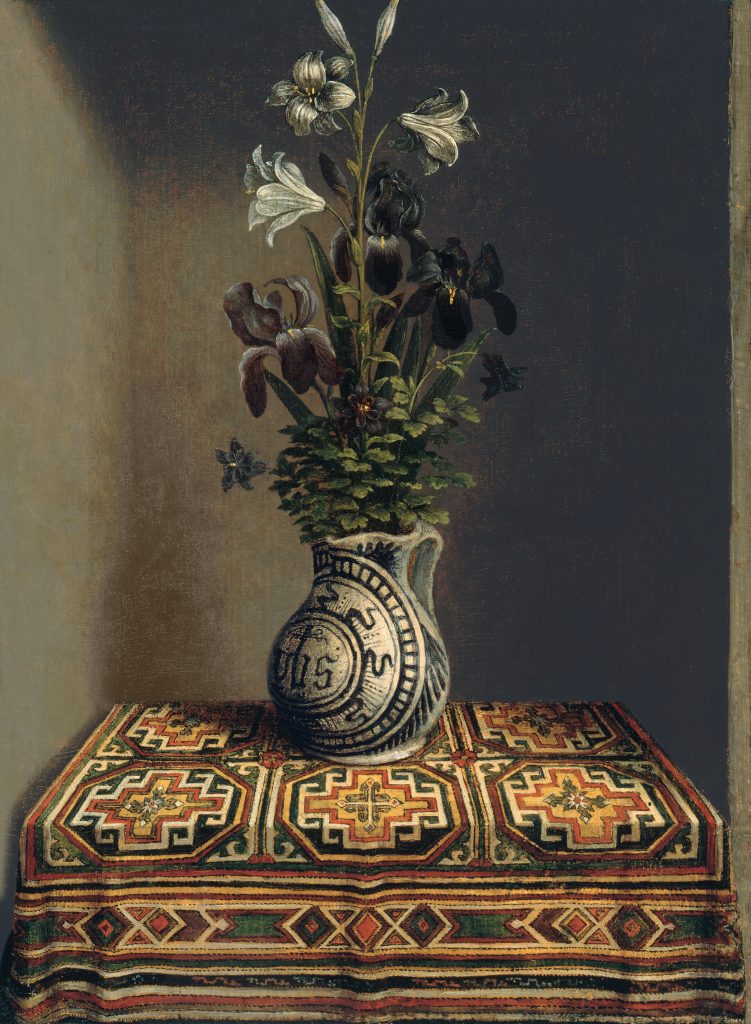
Hans Memling, Portrait of a Man (recto); Still Life with a Jug of Flowers (verso) (ca. 1485). Museo Nacional Thyssen-Bornemisza, Madrid. Photo: © Museo Nacional Thyssen-Bornemisza. Madrid.
The artworks include loans from European and other American institutions, such as the Ashmolean Museum, Gallerie defli Uffizi, Museo Nacional Thyssen-Bornemisza, and National Gallery of Art in Washington.
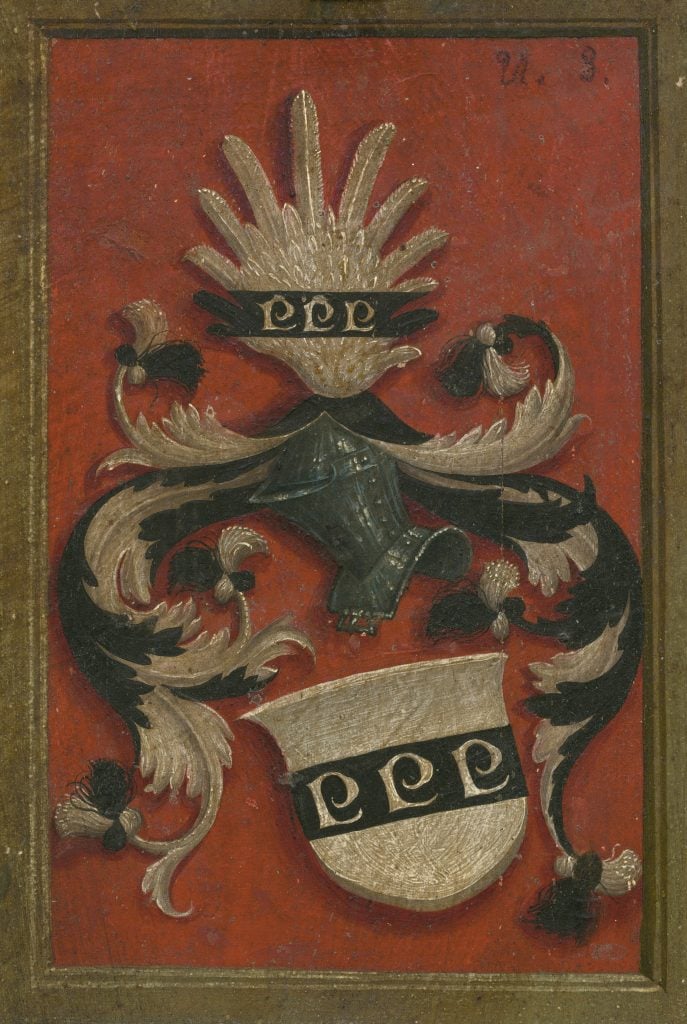
Bernhard Strigel, Portrait of Margarethe Vöhlin (recto); Coat of Arms (verso) (1527). National Gallery of Art, Washington, D.C., Ralph and Mary Booth Collection. Photo: Courtesy National Gallery of Art, Washington.
“Hidden Faces: Covered Portraits of the Renaissance“ is on view at the Metropolitan Museum of Art, 1000 5th Ave, New York, through July 7.